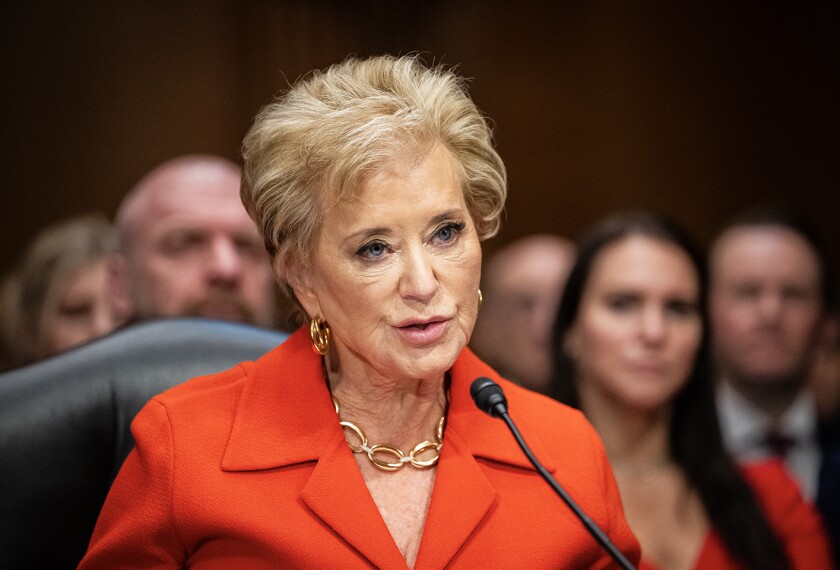As anyone who works in education knows, the quality of our schools matters. High-quality schools have the power to affect the demographics and property values of their communities and can provide effective ways to guide students out of cycles of poverty. In recent years, the Blue Ribbon Schools Program has served as one national indicator of some of the most successful schools in the country.
The U.S. Department of Education created the Blue Ribbons Schools Program in 1982 to recognize public and private schools that achieve high levels of academic excellence and make substantial progress toward closing the achievement gap for all students. Several hundred schools receive the award annually, with more than 8,000 recipients across the country since the program began. The designation does not expire, but schools must indicate the year they received the award, and the program encourages schools to reapply after five years.

These schools, which serve as outstanding models of excellence for their states in an otherwise disjointed education system, benefit from more than just a title. According to the Education Department, the designation can lead to partnerships with local businesses and community volunteers as well as financial help. Principals and school leaders may receive invitations to present at state and regional meetings about their most effective practices for students and faculty. District and state educators may visit schools to learn about strategies for leadership and instruction.
As a professor of education who provides professional development for three public elementary and middle schools in New York with Blue Ribbon designations, I have witnessed teachers’ and administrators’ commitment to academic excellence for all students. Each school prominently displays its status in its building. But I have noticed that the designation does not account for changes that may occur after the award is given, such as faculty turnover, new mandates, and curricula that affect educational practices; changes in student population or funding for programs in the arts or sciences; or other factors that have an impact on overall school performance.
When I ask educators at these schools what the status continues to signify, they admit that after an awards ceremony in Washington, it’s back to the day-to-day work of trying to run an excellent school. There seems to be no way to measure whether the practices that earned a school its award are still in place.
Moreover, with no follow-up from the federal Education Department after designation, the high-quality practices that these schools achieve and the opportunities that come with the award may peter out. This seems to be a squandered opportunity to help excellent schools sustain their status and harness their expertise as a model for others.
At the national level, Blue Ribbon schools could serve as mentors to the wider world of K-12 education."
This is why the federal department, state and local leaders in education, and their award-winning schools should revise the program to more effectively build capacity for excellence in school systems and account for schools’ sustainability of that capacity. Michael Fullan, a leading scholar on school reform, defines capacity-building as “actions that lead to an increase in the collective power of a group to improve student achievement, especially by raising the bar and closing the gap for all students.” Fullan believes that to sustain schools’ development, they need nurture from an external infrastructure—one that invests in professional development, teacher training, and ongoing support.
To build sustainability within some of our nation’s most excellent schools, I recommend making the Blue Ribbon program a five-year renewable plan with an advanced designation. Renewing schools would need to acquire their state or institutional governing bodies’ recommendations by showing not only how they sustained excellence, but also how they developed at least one area of expertise—such as integrating technology, incorporating multicultural children’s literature, or developing collaborative learning and strong discussion practices in the classroom. Only then would states recommend renewal for a school’s advanced designation.
As one example for improvement at the local level, school administrators in New York state want to support teachers in developing stronger discourse practices, and one of the Blue Ribbon schools where I work consistently demonstrates a high level of classroom discourse.
Imagine if this school could share this expertise. A nearby school that needs guidance could sign up for mentorship. District leaders might organize a group of schools with this need to develop common goals and a plan of action, including ways to monitor improvement and schedule visits with Blue Ribbon schools that can illustrate successful efforts.
Federal and state leaders could also prvide grant funding for advanced schools to harness their expertise through national and local partnerships, such as those between a school district and a nearby college of teacher education. These K-12 schools could become sites for initial preservice field experience and student teaching, with experienced teachers also serving as guest lecturers for college courses.
At the national level, Blue Ribbon schools could serve as mentors to the wider world of K-12 education. Other schools seeking development in a particular area of need could sign up for mentorship programs with awardees. Teachers in schools with advanced designation could lead webinars and conduct study groups; grant money could be used to develop and implement these virtual opportunities.
Many proponents of K-12 change consider creating high-quality schools with sustainable capacity-building the biggest equity issue in education. Through collaborative structures, my recommendations assure ongoing learning and continual improvement of practices in Blue Ribbon schools. Improvements to the program could build structures that encourage schools to learn from each other and ensure deep, distributed learning. A stronger infrastructure for excellent schools is one step to building K-12 equity for all students.




